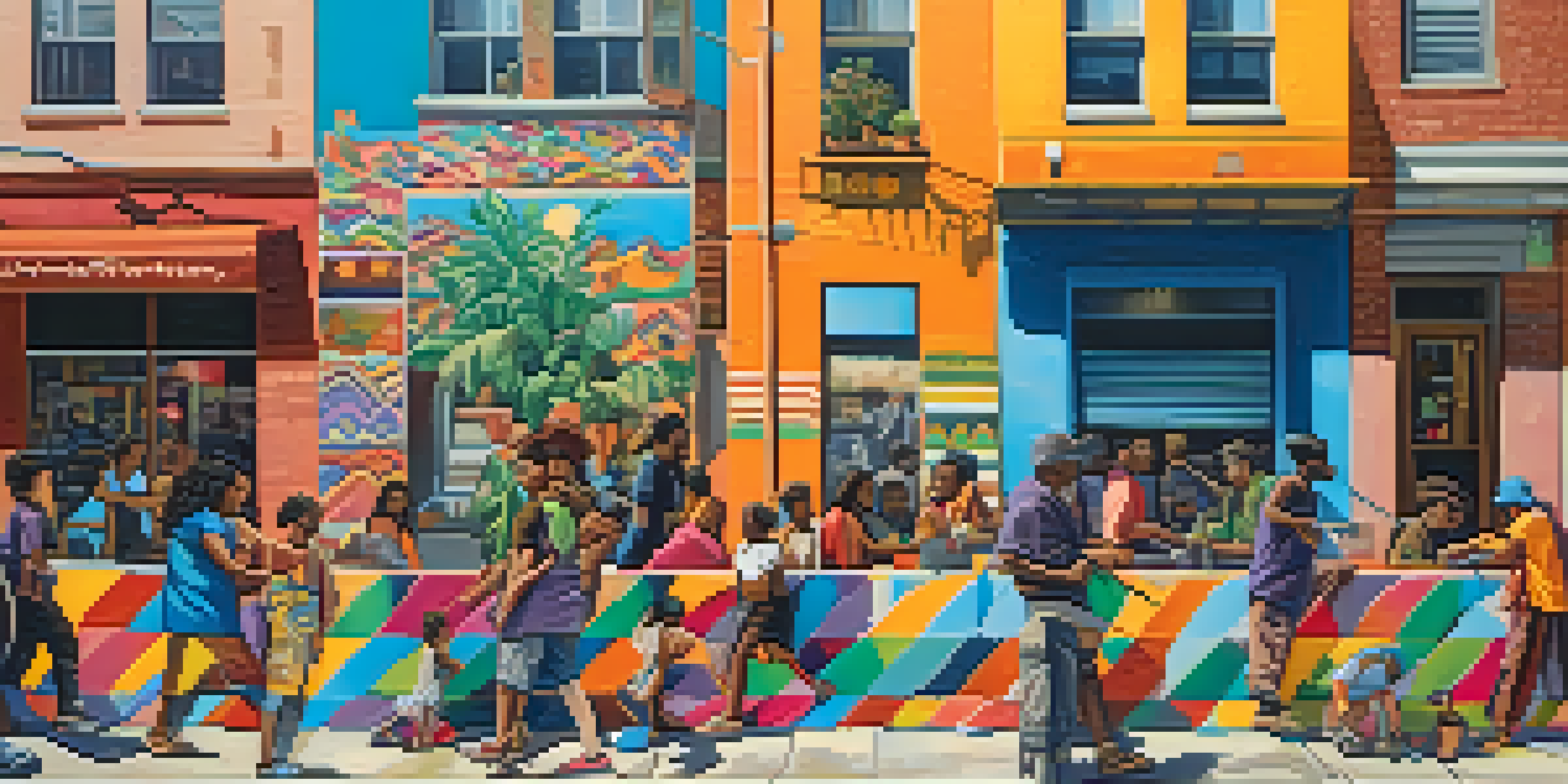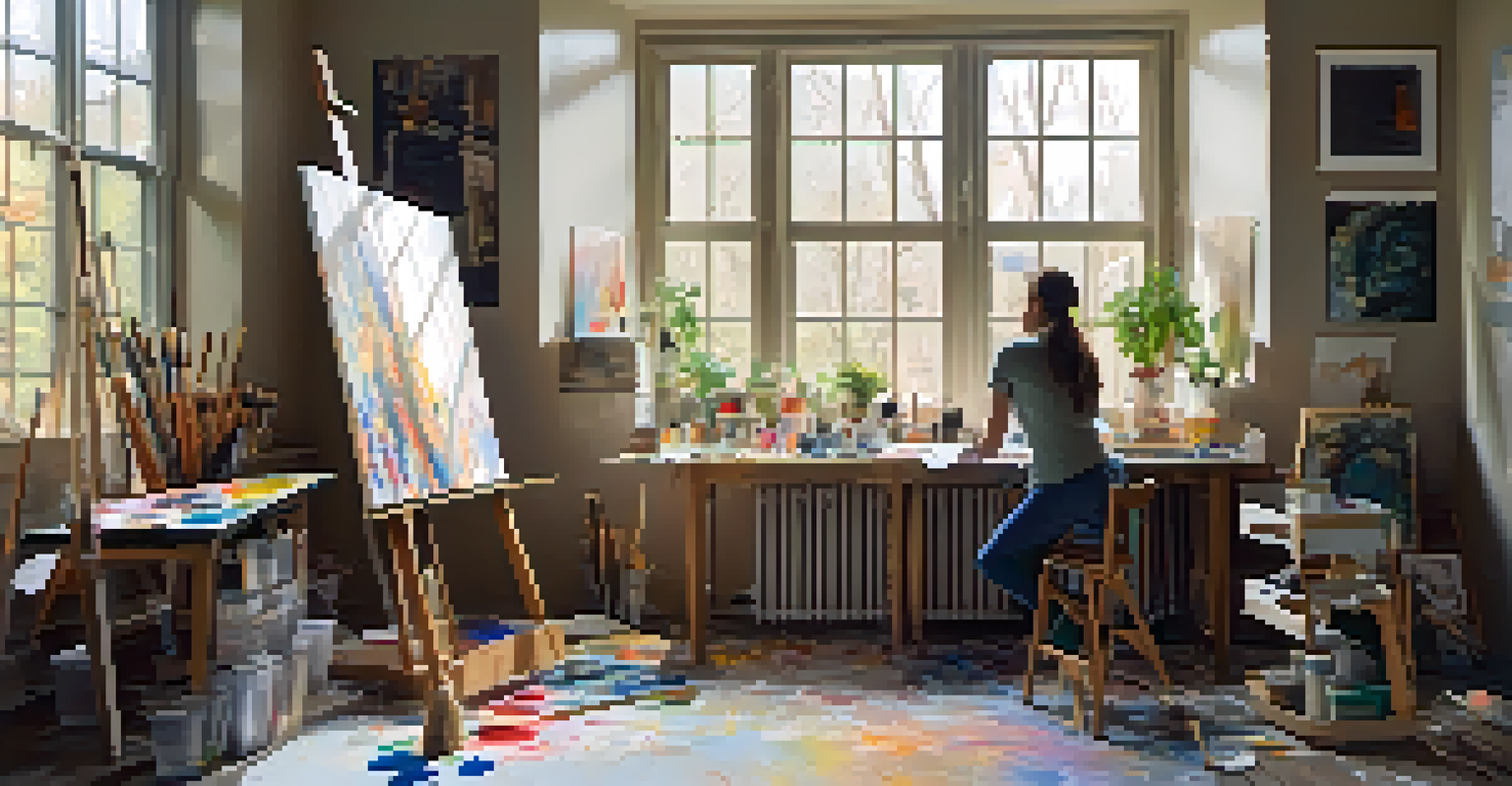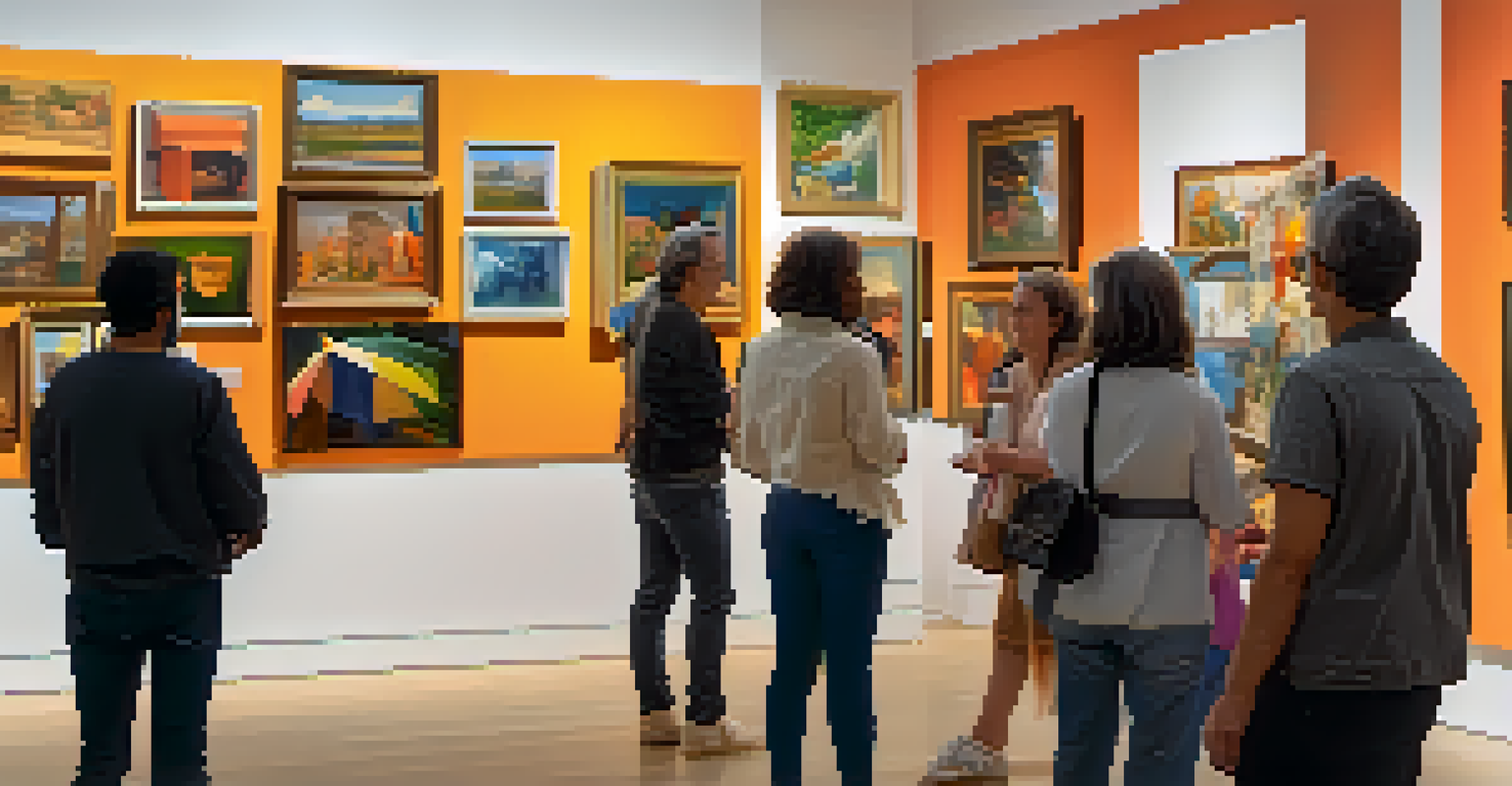Creating Community: Social Media and Local Art Scenes

The Power of Social Media in Art Communities
Social media has transformed the way artists connect, showcase, and collaborate. Platforms like Instagram and Facebook have become vibrant galleries where local artists can share their work with a global audience. This accessibility breaks down traditional barriers and enables artists to build a community around their passions.
Art is not what you see, but what you make others see.
Through posts, stories, and live streams, artists can engage directly with their audience, creating a sense of intimacy and connection. This interaction not only fosters community but also encourages feedback and collaboration, enriching the creative process. As these virtual connections grow, so does the potential for local art scenes to thrive.
Moreover, social media allows for the discovery of emerging talents and unique local events. Artists can promote exhibitions, workshops, and pop-up shows, inviting the community to participate and celebrate creativity together. In this way, social media acts as a powerful catalyst for local art movements.
Building Local Identity Through Art
Local art scenes often serve as a reflection of their communities, showcasing the culture, history, and values of their surroundings. Social media helps amplify this identity by giving artists a platform to express and share their stories. When artists post about their work, they invite others to see their city through a creative lens.

For instance, a mural in a neighborhood can tell the story of its residents, and sharing it on social media can spark conversations and pride among locals. This shared narrative fosters a sense of belonging and encourages collaboration among artists and community members alike. As more people participate, the local identity becomes richer and more diverse.
Social Media Strengthens Art Communities
Social media platforms enable artists to connect, collaborate, and promote their work, fostering vibrant local art scenes.
Moreover, when local art is celebrated on social media, it can attract attention from outside the community, potentially drawing tourists and new residents. This influx can lead to further investment in the arts and culture, creating a cycle of growth that benefits everyone involved.
Engaging the Community Through Collaborative Projects
Collaborative art projects can bring communities together in powerful ways, and social media plays a crucial role in organizing these initiatives. Artists can use platforms to call for participation, share ideas, and document the creative journey. This sense of collective effort not only enhances community bonds but also leads to enriched artistic expressions.
Creativity takes courage.
For example, a community mural project can involve local residents in painting, which allows them to take ownership of the artwork. Sharing updates on social media not only builds excitement but also encourages others to join in. These collaborations foster a sense of pride in one’s surroundings and deepen connections among participants.
Additionally, showcasing these projects on social media can inspire other communities to undertake similar initiatives. By sharing successes and challenges, artists can create a roadmap for collaboration that others can follow, further strengthening the art community as a whole.
Nurturing Emerging Artists with Online Support
Social media can be a nurturing ground for emerging artists, offering them the support they need to develop their skills and confidence. By following established artists, newcomers can learn and gain inspiration from their journeys. This mentorship can often extend to online interactions, where experienced artists provide feedback and encouragement.
Platforms also allow for peer-to-peer support, with artists sharing tips, resources, and opportunities. Groups or hashtags dedicated to local art can foster a sense of belonging and create a safe space for sharing work. This kind of camaraderie can be invaluable, especially for those just starting their artistic journey.
Inclusivity Enhances Artistic Narratives
By amplifying diverse voices, social media creates a richer dialogue within local art communities and fosters empathy.
Moreover, showcasing their work on social media helps emerging artists gain visibility and attract potential patrons or collaborators. With every post, they are building their portfolio and finding their unique voice, contributing to the overall vibrancy of the local art scene.
Promoting Events and Exhibitions Locally
One of the most effective ways social media enhances local art scenes is through event promotion. Artists and organizations can easily share details about upcoming exhibitions, workshops, and art fairs with just a few clicks. This immediacy not only informs the community but can also create a sense of urgency and excitement.
For instance, posting a countdown to an exhibition opening can build anticipation and encourage attendance. Creating event pages where attendees can RSVP also fosters a sense of community, allowing locals to connect with each other before even stepping foot in the gallery. These online interactions can lead to real-world connections that strengthen local ties.
Additionally, social media allows for targeted advertising, ensuring that events reach interested audiences. By using local hashtags and engaging with community groups, artists can maximize their visibility and draw in attendees who are passionate about the arts.
Fostering Inclusivity in the Art Community
Social media has the potential to create more inclusive art communities by amplifying underrepresented voices. Artists from diverse backgrounds can share their perspectives and experiences, enriching the dialogue within local art scenes. By highlighting these stories, social media encourages empathy and understanding among community members.
For example, artists can use their platforms to address social issues through their work, sparking important conversations. By sharing their journey and the challenges they face, they invite others to join in the discussion and promote awareness. This openness fosters an environment where inclusivity thrives.
Challenges of Digital Art Engagement
Despite its benefits, social media can lead to pressure and competition among artists, impacting their creative processes.
Moreover, social media allows for the organization of events focused on representation and diversity. By promoting these initiatives, artists can create safe spaces for marginalized voices, ensuring everyone feels welcome in the local art scene. This commitment to inclusivity strengthens the community and enriches the artistic landscape.
Challenges of Social Media in Art Communities
While social media offers numerous benefits to local art scenes, it also presents challenges that artists must navigate. The pressure to curate a perfect online presence can sometimes overshadow the creative process. Many artists find themselves focusing more on likes and followers than on the art itself, which can lead to burnout.
Additionally, the constant influx of content can make it difficult for individual artists to stand out. In a sea of images, it’s easy for even the most talented creators to be overlooked. This competition can create anxiety and diminish the joy that art should bring.

Furthermore, some artists may face negative feedback or online harassment, which can be discouraging. Building a supportive community that prioritizes kindness and constructive criticism is essential for fostering a healthy environment for creativity. Addressing these challenges head-on can help ensure that social media remains a positive force in local art scenes.
The Future of Local Art Scenes in a Digital World
As we look ahead, the intersection of social media and local art scenes will continue to evolve. With new platforms emerging and technology advancing, artists will have even more tools at their disposal to connect and share their work. This evolution presents exciting possibilities for collaboration and creativity.
Moreover, as more artists embrace digital tools, the definition of what constitutes 'local art' may expand. Virtual exhibitions and online art markets can reach audiences far beyond geographical boundaries. This democratization of art access can enrich local scenes while maintaining their unique identities.
Ultimately, the future of local art scenes will likely be a blend of in-person interactions and digital connections. By leveraging the strengths of both worlds, artists can foster vibrant communities that celebrate creativity, inclusivity, and collaboration for years to come.